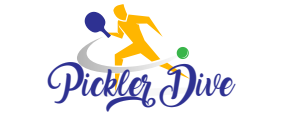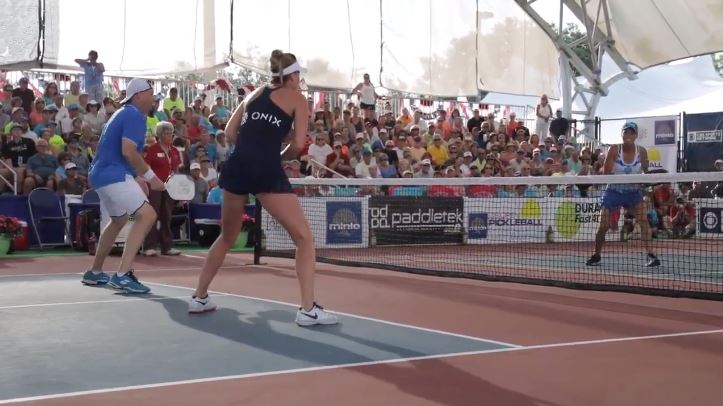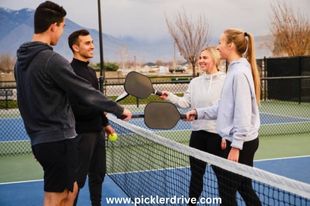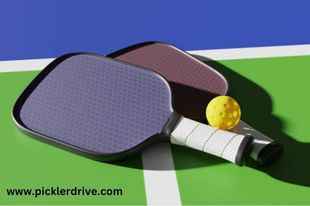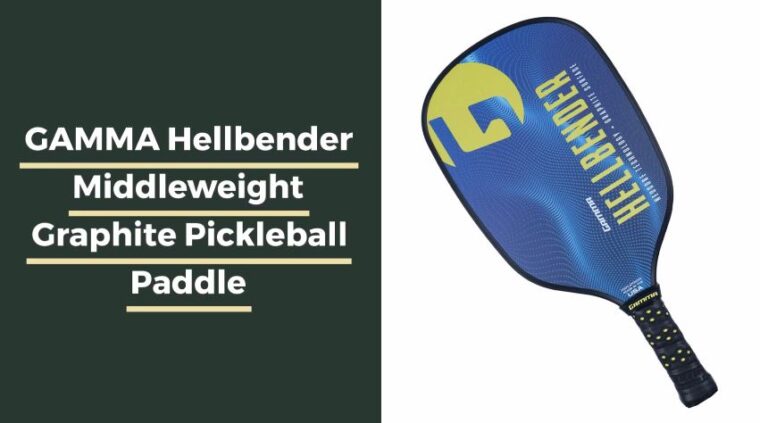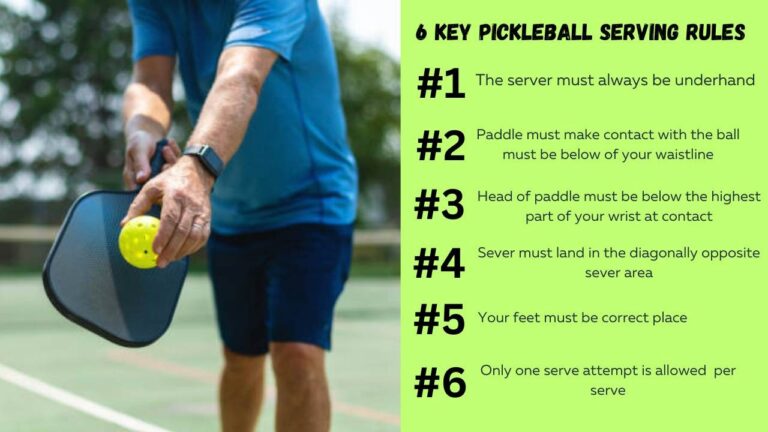Pickleball is an exciting game that has become increasingly popular in recent years. It’s a fun and energetic sport that can be enjoyed by players of all ages and skill levels.
However, one crucial element in the game is choosing the right paddle many different shapes of Pickleball Paddles are available in market. Many players make the mistake of thinking that any paddle will do, but this couldn’t be further from the truth.
Buying a pickleball paddle can be a daunting task these days. Gone are the days of simple wooden paddles with uniform shapes. As the sport of pickleball has exploded in popularity, so too has the diversity of paddle options available on the market. Each brand is constantly searching for the latest and greatest product that will set them apart from the competition, whether it’s a paddle with a soft, silent core, a surface that’s strong or spin-friendly, or a unique shape that delivers more power or a larger sweet spot. In addition to considering the different hitting surfaces available, players must also navigate the variety of paddle shapes on offer.
Unleashing the Power: Exploring the Different Shapes of Pickleball Paddles
The Role of Paddles in Pickleball
A pickleball paddle is to a player what a wand is to a wizard. It’s an extension of your arm, and choosing the right one can make all the difference in your gameplay. A good paddle should help you generate power for your shots while maintaining control and accuracy.
Choosing the wrong paddle could lead to poor technique, injuring yourself or another player, or even losing games that you should have won. Furthermore, no two paddles are exactly alike – each one will have its unique features, design elements, weight distribution and grip styles.
Different Shapes of Pickleball Paddles
There are several different shapes of pickleball paddles available on the market today – each with its unique benefits and drawbacks:
Standard Pickleball Paddles/ Classic Shape 15 3/4″ x 7 7/8″
Paddles with a standard shape have a traditional appearance and are ideal for players who prefer a balanced approach to the game, incorporating power, control, and touch. These paddles usually measure between 15-15 ¾” in length and approximately 8” in width, with grip lengths ranging from 4 ½” to 5 ¼”. Standard-shaped paddles are the most commonly used type of paddle in pickleball.
The classic shape is a rectangular paddle with rounded edges. This shape has been around since pickleball’s creation.
Personally, I find this shape dull and boring. Sure it may offer advantages for newer players who are still developing their techniques but it lacks creativity compared to other designs available.
Blade Shape Pickleball Paddles 17″ x 6 7/8″
Blade-shaped paddles are easily the most distinctive paddle shape in pickleball. These paddles are extremely long and narrow, and are favored by singles players in particular. Blades can measure nearly 17” in length and feature a small, compact sweet spot located high on the hitting surface, which can make them difficult for beginners to wield effectively. Blades are a popular choice for tennis players who are making the switch to pickleball and desire extra length from their paddle.
Teardrop Shape Pickleball Paddles 16 1/2″ x 7 1/4″
Another popular-shaped paddle is teardrop-shaped: it features a wider top surface than bottom surface giving it more power which makes it ideal for experienced players looking for a competitive edge. However, the teardrop shape’s design makes it less agile and more cumbersome than other options. In my opinion, while it does offer great power, it’s not the most efficient choice for competitive play.
Widebody Shape Pickleball Paddles 16″ x 8″
There is the widebody paddle. This design has an enlarged hitting surface area that provides forgiveness on off-center hits.
It’s ideal for players with arm or shoulder injuries who need extra support during gameplay. Personally, I believe this shape was designed for players who have already developed good techniques and looking to perfect their gameplay.
For beginners or intermediate players, it may be too cumbersome to handle effectively when starting out. Choosing a paddle should be taken seriously as it can make or break your game; choose one that suits your skill level and style of play well enough to win games with confidence!
The Standard Pickleball Paddles/ Classic Shape
The Rectangular Paddle with a Rounded Edge
The classic shape of a pickleball paddle is rectangular with a rounded edge. This design has been around since the inception of the sport and is still widely used today.
The rectangular shape provides players with a larger hitting surface, making it easier to make contact with the ball. The rounded edge helps prevent mishits by reducing the chances of the paddle catching on the ground or hitting an unintended angle.
Popularity Among Beginners and Intermediate Players
The classic shape paddle is incredibly popular among beginners and intermediate players for its ease of use and user-friendly design. It provides a balance between power and control, making it perfect for those who are just starting out or looking to improve their game. Because of this, many pickleball sets come equipped with classic shaped paddles.
A Balanced Mix of Power and Control
One of the reasons why the classic shape paddle is so popular is because it provides players with a balanced mix of power and control. With this type of paddle, players can hit shots with enough force to get them over the net while still maintaining enough control to keep them in bounds. This makes it perfect for those who are still learning how to play pickleball or looking to improve their game without sacrificing too much power or accuracy.
In my opinion, if you’re new to pickleball or an intermediate player looking for a reliable paddle that can help you improve your game, then choosing one that has a classic shape is definitely worth considering. Its user-friendly design combined with its balanced mix of power and control make it an ideal choice for anyone looking to up their game on the court!
The Blade Shape
Blade-shaped pickleball paddles are becoming increasingly popular among players of all skill levels. These paddles offer a unique design that sets them apart from other paddle shapes on the market.
Length, Width, Size, Weight
Blade-shaped paddles are known for their length. They are typically the longest type of paddle, with some measuring up to 17 inches in length. This extra length can be a huge advantage for players who are looking for added reach on the court. However, the longer length also means that the paddle may be a bit more difficult to maneuver, especially for players who are new to the sport.
While blade-shaped paddles are long, they are typically narrower than other paddle shapes. This narrow width allows for greater maneuverability, as the paddle can be quickly and easily moved into position. The tradeoff, however, is that the smaller hitting surface means that the sweet spot is much smaller and more difficult to hit consistently.
Blade-shaped paddles are typically sized similar to other types of paddles, ranging from 15 to 17 inches in length and 7.5 to 8 inches in width. The smaller hitting surface on blade-shaped paddles means that they may feel slightly smaller in the player’s hand, but this is generally not a major issue for experienced players.
Blade-shaped paddles are usually lightweight, with most weighing between 6 and 8 ounces. This light weight makes them easy to maneuver and swing, which can be a major advantage for players who value speed and agility on the court.
An Unnecessary Risk
Advantages of Blade-Shaped Paddles:
There are several advantages to using a blade-shaped pickleball paddle. First and foremost, the added length provides players with extra reach on the court. This can be particularly useful for singles players, who need to cover more ground and may have a harder time getting to shots that are hit far away from them. Additionally, the narrow width of the paddle allows for greater maneuverability and control, making it easier to hit precise shots and place the ball exactly where you want it.
Disadvantages of Blade-Shaped Paddles:
While there are many advantages to using a blade-shaped paddle, there are also some disadvantages to consider. As mentioned earlier, the smaller hitting surface means that the sweet spot is more difficult to hit consistently. This can be frustrating for players who are used to using paddles with larger sweet spots. Additionally, the longer length of the paddle can make it more difficult to maneuver, especially for players who are not used to using a blade-shaped paddle.
Conclusion: Know Your Priorities
Blade-shaped paddles are a good choice for players who are looking for added reach on the court and value maneuverability and control. They are particularly popular among singles players, who need to cover more ground and may benefit from the added length. However, it’s important to note that blade-shaped paddles may not be the best choice for beginners, as the smaller sweet spot and longer length can be difficult to master.
In conclusion, blade-shaped pickleball paddles are a great option for players who are looking for added reach and maneuverability on the court. While they may not be the best choice for beginners, experienced players can benefit greatly from the unique design of these paddles. As with any equipment purchase, it’s important to consider your individual needs and preferences before making a final decision.
The Teardrop Shape
Power at the Cost of Control
The teardrop shape is a popular choice among experienced players who prioritize power in their shots. The wider top of the paddle provides a larger sweet spot, allowing players to hit harder without sacrificing precision. However, this increased power comes at a cost – less control and maneuverability.
Due to its narrower bottom, the teardrop shape requires more wrist action and technique to achieve proper placement on the court. As someone who values consistency and placement over sheer power, I find the teardrop shape frustrating to use.
It feels unwieldy in my hand, and I struggle to place shots where I want them. Sure, it may be satisfying to occasionally smash one past your opponent with a teardrop paddle, but what good is that if you can’t consistently place your shots where you need them?
An Unnecessary Risk
Furthermore, the teardrop shape can be an unnecessary risk for those with intermediate or beginner skill levels. Unless you’re already comfortable with your technique and have consistent ball placement, trying to incorporate a new paddle shape into your game could lead to more mistakes than benefits.
I’ve seen too many players switch to a teardrop paddle prematurely, only to regret it when they realize they’re sacrificing their control on crucial points. It’s important to remember that just because something is popular or endorsed by professionals doesn’t mean it’s right for everyone.
Conclusion: Know Your Priorities
At the end of the day, whether or not the teardrop shape is right for you depends on your individual priorities as a player. If raw power is what you crave above all else and have the necessary skill level for it, then by all means give it a try.
However, if you prioritize control and consistency like I do or are still developing your technique, it may be best to stick with a classic or widebody paddle. Ultimately, the goal is to find a paddle that complements your style of play and helps you achieve your goals on the court.
The Widebody Shape
Forgiveness on Off-Center Hits: What’s Not to Love?
The widebody shape is the answer to every pickleball player’s prayers. It’s a paddle with an enlarged hitting surface area, which means that players have more room for error when they hit the ball off-center.
In other words, it offers more forgiveness on off-center hits. For players like me who don’t always hit the ball in the sweet spot, the widebody shape is a godsend.
No more frustration and disappointment when I miss an easy shot due to poor aim or timing. With this paddle, I can still make a decent shot even if I don’t hit it perfectly.
Some may argue that relying on forgiveness instead of perfect technique is not ideal for improving one’s skills. However, I believe that having a paddle that forgives mistakes can actually help players gain confidence and motivation to keep playing and practicing.
Perfect for Injured Players
Another advantage of the widebody shape is that it can be useful for players with arm or shoulder injuries. The larger hitting surface area means less stress on the muscles and joints compared to smaller paddles.
As someone who has experienced elbow pain from playing too much pickleball with a standard paddle, switching to a widebody shape made a big difference in my comfort level while playing. I was able to play longer without feeling as much strain on my arm.
Of course, this doesn’t mean that injured players should ignore their doctor’s advice or push themselves too hard just because they have a wider paddle. However, it does offer some relief and support during recovery periods or for chronic conditions.
Bigger May Not Always Be Better
Despite its advantages, there are also some disadvantages of using a widebody shaped paddle. For example, some players may find it difficult to maneuver due to its larger size. It may also feel heavier and slower compared to standard-sized paddles.
In addition, the larger hitting surface area may not always translate to better performance for every player. Some may prefer a smaller paddle with more control or finesse, especially for those who rely on precise shot-making instead of power.
Ultimately, the decision to use a widebody shaped paddle comes down to personal preference and play style. Players should try out different shapes and sizes to see what works best for them, taking into consideration their skill level, physical condition, and playing goals.
The Edgeless Shape: A Paddle Like No Other
Every once in a while, a product comes along that revolutionizes its industry. In the world of pickleball paddles, the edgeless shape is that product.
This unique design eliminates all hard edges and corners, providing players with maximum maneuverability and control. While it may take some time to get used to playing with this paddle, the benefits are simply too great to ignore.
Unmatched Maneuverability
One of the most significant advantages of an edgeless paddle is its unmatched maneuverability. Unlike other shapes that can get caught on net or court surfaces, an edgeless paddle allows for quick and effortless movement in any direction. This makes it ideal for players who like to play close to the net and need maximum control over their shots.
Additionally, because an edgeless paddle doesn’t have any hard edges or corners, there’s less friction between the paddle and ball upon impact. This translates into faster reaction times and better shot placement on both offense and defense.
A Unique Learning Curve
Admittedly, playing with an edgeless paddle does take some getting used to. For those accustomed to more traditional shapes like teardrop or classic paddles, it may feel strange at first. However, don’t let this initial discomfort deter you from giving it a chance.
Once you’ve adapted your playstyle accordingly – such as adjusting your grip or swing – you’ll quickly find that using an edgeless paddle feels natural and intuitive. In fact, many experienced players swear by this shape as their go-to option.
Frequently Ask Questions
The Future of Pickleball Paddles?
While only time will tell if the edgeless shape becomes the default option for pickleball players worldwide, there’s no denying its potential impact on the sport. With numerous benefits such as unparalleled maneuverability and shot control, it’s becoming increasingly clear that the edgeless shape is a game-changer.
Of course, ultimately, the right paddle shape is a personal choice. What works for one player may not work for another.
However, if you’re looking to up your game and try something new, give the edgeless paddle a chance. You might be surprised by just how much it improves your playing experience.
